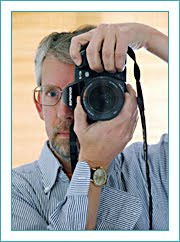 I spent the day yesterday in Chico, California, which is the home of the National Yo-Yo Museum (a modest affair in the back of a toy store, but interesting nonetheless) and since 1993 has been the site of the National Yo-Yo Championships. My son, an avid yo-yo fan, wanted to go. All the sport's celebrities were there. He collected many autographs, learned new tricks, and got to hang out with about 200 kids that spoke the language. He was in yo-yo heaven. I hadn't been looking forward to the long (about three hours) drive to Chico and back. I brought a book with me and even my camera and binoculars, thinking I might slip away and do some bird watching if things got tedious, but I ended up watching all the qualifying rounds and the finals.
I spent the day yesterday in Chico, California, which is the home of the National Yo-Yo Museum (a modest affair in the back of a toy store, but interesting nonetheless) and since 1993 has been the site of the National Yo-Yo Championships. My son, an avid yo-yo fan, wanted to go. All the sport's celebrities were there. He collected many autographs, learned new tricks, and got to hang out with about 200 kids that spoke the language. He was in yo-yo heaven. I hadn't been looking forward to the long (about three hours) drive to Chico and back. I brought a book with me and even my camera and binoculars, thinking I might slip away and do some bird watching if things got tedious, but I ended up watching all the qualifying rounds and the finals. The yo-yo has come a long way since I was fooling with them in the mid-1970s--about the time when plastic Duncan butterfly-style yo-yos were something new (butterfly designs have the traditional rounded halves mounted backwards to create a large, flared opening for the string rather than a thin slot). Today, that butterfly shape is the norm, yo-yos are mostly made of metal rather than wood or plastic (sometimes very fancy metals, but usually aluminum), and they have sophisticated bearings around the axle; they are mostly designed not to return to the hand, but rather to spin free as long as possible, allowing a variety of tricks--sometimes quite spectacular tricks.
The yo-yo has come a long way since I was fooling with them in the mid-1970s--about the time when plastic Duncan butterfly-style yo-yos were something new (butterfly designs have the traditional rounded halves mounted backwards to create a large, flared opening for the string rather than a thin slot). Today, that butterfly shape is the norm, yo-yos are mostly made of metal rather than wood or plastic (sometimes very fancy metals, but usually aluminum), and they have sophisticated bearings around the axle; they are mostly designed not to return to the hand, but rather to spin free as long as possible, allowing a variety of tricks--sometimes quite spectacular tricks.About 50 contestants, winners and strong placers at regional championships, competed in five classes. The most popular 1A class is also called "freestyle," where anything goes (this is what most of us think of when fancy yo-yo work comes to mind). The 2A class involves looping tricks with two yo-yos. The 3A class uses two yo-yos at the same time to do freestyle tricks. The 4A class is called "off-string," because the yo-yo is free to leave the string. The 5A class uses yo-yos with a counterweight on the end of the string that's usually tied to the players finger. The counterweight allows a unique range of tricks and effects.
I'm no expert, but it's easy to appreciate the skill of the best performers, to see their individual quirks on the one hand, and stylistic trends on the other that suggest schools within the official classes. Some performers seemed to excel at speed and daring, willing to risk misses in the hope of landing something spectacular, like getting the yo-yo to land back on its string after shooting it up into the air and doing a backwards somersault on the ground. Others focused on precision--doing rapid series of string tricks mostly standing in one spot. The off-string yo-yoers give the impression of jugglers. The work of the counterweight yo-yoers is slower and more liquid and sometimes seemingly animated; as momentum is transferred back and forth between the yo-yo and the counterweight, the string can appear to be moving on its own. The performers using two yo-yos simultaneously, one in each hand, put me in mind of wild west gunslingers twirling their guns. All in all, there was a lot to watch. Pictured here is a proud Harold Owens III, of Indiana, the 2011 1A Champion. In the first shot above, Tyler Goldenburg, of Phoenix, Arizona competes in the finals. The yo-yos are some of the historical examples preserved at The Yo-Yo Museum.







No comments:
Post a Comment